Time is money, and factors like staffing and available workspace can significantly impact both. For example, if you’ve felt the effects of the great resignation or bottlenecked testing rooms plague your technicians, your practice might be missing out on its earning potential. A virtual reality testing platform could provide the much-needed performance boost you seek.
Olleyes VisuALL ETS and VisuALL S Virtual Reality Platforms are multi-function systems that can consolidate a roomful of equipment into a single headset that patients wear for reliable, fast, and easy testing. Tests include:
- Visual field (adult and pediatric)
- Visual acuity (near and far)
- Color vision (D-15)
- Contrast sensitivity
- Pupillometry
- Extraocular motility
- And more
One of the most significant factors in establishing a productive, profitable business is your ability to cycle patients from the waiting area to the exam room and out as efficiently as possible while still providing a quality exam. With all of their capabilities in one headset, here are a few ways virtual reality platforms like VisuALL can help revolutionize your practice’s productivity.
1. Make Better Use of Office Space
Simply a headset and controller, not big, bulky tabletop equipment like traditional units, VisuALL doesn’t require a dedicated space with specific lighting. “I like to tell doctors that (with VisuALL) they could run their visual field tests in their lobby if they wanted to,” says Jeff Morris, an Area Manager with Marco. “The equipment goes where you are without any special tech or space requirements.”
The gold standard for visual field perimetry has always been a large, standalone device. But Claudio Lagunas, OD, of Lifetime Eyecare Associates, explains how the VisuALL has been a better fit for his practice. “We’re growing, so space is limited. VisuALL’s portability has been great for us. Being able to move it from room to room has helped eliminate logjams in our pre-test area. Plus, our patients have really embraced the technology and the kids love it!”
2. Free Up Your Staff
Team members delegated to perform visual field testing often feel like they drew the short straw. It’s time-consuming, and they’re usually at the mercy of the patient’s ability to perform the test. Fortunately, Olleyes has equipped its VisuALL platforms with an interactive virtual assistant named Annie. Annie walks patients through the testing process step-by-step. Practices can also create test bundles with groups of their most commonly used tests and Annie will take the patient from one to the next until they are all complete.
“With our VisuALL, the technician is not tethered to the test. Once they get started, Annie will go ahead and walk the patient through with instructions and keep them going, while our assistants can go over and start the next patient or get going on something else. It’s really made us much more efficient.” For most common protocols, the testing process only takes about three to four minutes total.
“The biggest thing for me is that it’s so consistent,” says Emily Coles, OD, owner and operator of Big Rapids Family Eyecare. “I have four technicians, and now they’re all delivering a uniform exam. With our previous machine, someone had to sit with the patient and ensure their eyeball was lined up with a camera. Now, they just have to help them with the mask, and the virtual assistant delivers the same instruction every time.”
3. Provide a Better Patient Experience
Virtual reality platforms like VisuALL also create a significantly less stressful testing experience for patients. “My patients tell me they are much more comfortable with the VisuALL system,” Coles says. “They don’t have to sit leaning forward on a chin rest, and we don’t need to finagle trial lenses. Patients dreaded the old way of testing so much that some would just decline it. It’s so much better now.”
VisuALL is also much more comfortable for elderly patients and less stressful for testing children, ultimately resulting in happier patients and more accurate test results. There’s no need to prop kids up at a big machine built for an adult.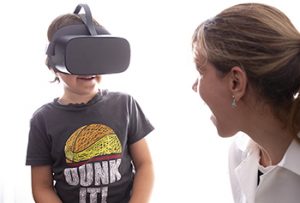
Children will sit still longer with a virtual reality headset than a traditional device, and Olleyes even went one step further by creating a pediatric version of the visual field test that’s more like a game. In fact, a recent study conducted by Vanderbilt University Medical Center found that VisuALL’s game-based VRP can be used to effectively map out the peripheral vision of pediatric patients and has a higher patient satisfaction than that of a traditional HFA. Patients found the headset more engaging and were more willing to complete the requested testing.
In addition to comfort, having the latest technology shows patients that you’re invested in their vision care. Lagunas says his patients appreciate the technology and it keeps them coming back to his practice. “One of the best compliments I get from my patients is when they ask me, ‘What’s new this year, doc?’ That’s a culture we’ve built over the years that keeps patients engaged with the process and their experience.”
4. Improve Testing Data
When compared to traditional methods, one of the distinguishing features of the VisuALL ETS is the Dynamic Matrix, a proprietary algorithm that significantly reduces fixation loss, many times to zero. Patients and technicians can relax because the VisuALL automatically tracks their gaze, yielding more accurate test results than traditional perimeters.
“A traditional visual field test is thrown off when a patient ‘cheats’ by not staring at the target,” says Morris. “If the stimulus is to the right, and you’re looking to the right, you’re going to say you can see it. But the VisuALL ETS will account for your movement and move the stimulus proportionally to your gaze.”
The VisuALL virtual assistant also has the ability to speak more than 30 languages, so test results are not influenced by communication barriers.
5. Lower Costs
It may seem a bit salesy to say that a piece of equipment pays for itself, but when compared to the cost of traditional devices, a VisuALL unit can represent significant savings, especially if you’re starting or expanding a practice.
“Imagine you’re just starting out and you don’t have a visual field machine,” Coles says. “Are you going to want to spend $30,000 or $3,000? It’s a huge price difference to get the same result. If you’re a multi-doctor practice, you will want to buy two of these. It’s a Captain Obvious moment.”
Using VisuALL for Glaucoma testing alone, Lagunas says his practice saw a return on its investment in the first year, outperforming some of the other technology in his office. However, he says the patient experience the device provides is priceless. “It’s just a wow factor that we can give our patients,” he says. “They can’t believe how cool the technology is. So in that respect, it paid for itself right away.”
If you’re interested in learning more about how a virtual reality platform can help your practice, click here or reach out to your local Marco Area Manager.
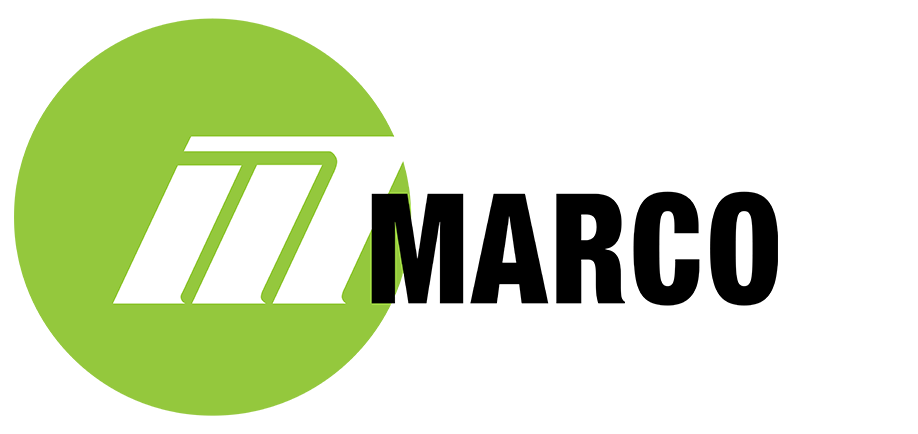

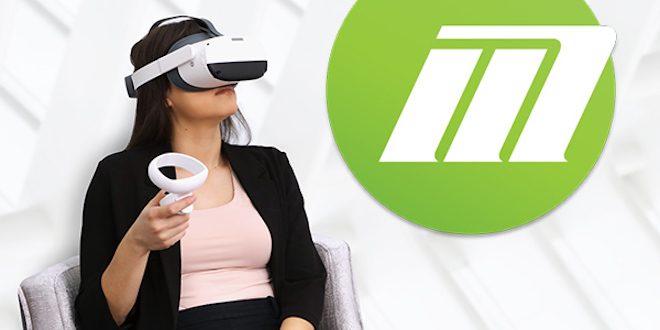
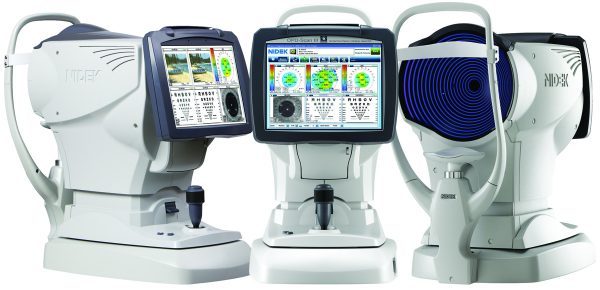
 Claudio Lagunas, OD, is a builder of practices. He has owned nine—with four at one time—but now has just two. One is his established practice in Woodlands, Texas. He and his wife Grisel Lagunas, OD, recently acquired an existing practice in Spring, Texas, when the opportunity was too good not to jump at it.
Claudio Lagunas, OD, is a builder of practices. He has owned nine—with four at one time—but now has just two. One is his established practice in Woodlands, Texas. He and his wife Grisel Lagunas, OD, recently acquired an existing practice in Spring, Texas, when the opportunity was too good not to jump at it.

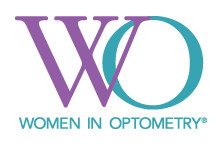
 Automated system for refractions brings physical relief, too.
Automated system for refractions brings physical relief, too.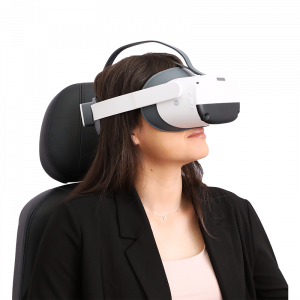
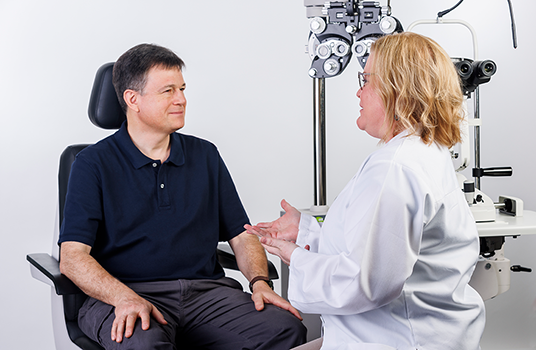
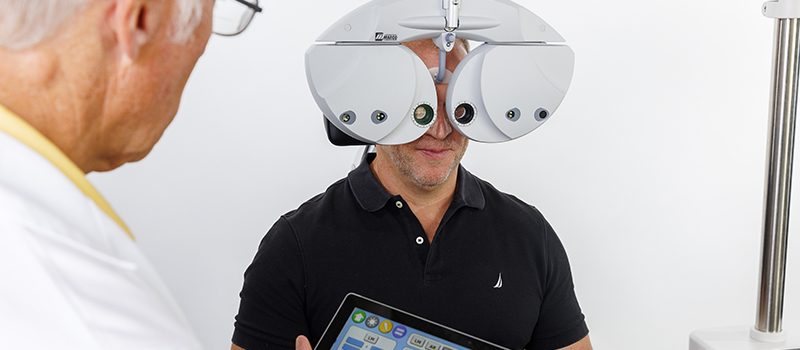
 “I’ve gotten patient referrals from other customers exclusively based on how impressed they were with my equipment,” says Dr. Andrea Knouff of Eyeclectic Vision Source in Atlanta, GA. “In today’s internet-savvy world, we must stay up to date on technology and separate ourselves from the competition.”
“I’ve gotten patient referrals from other customers exclusively based on how impressed they were with my equipment,” says Dr. Andrea Knouff of Eyeclectic Vision Source in Atlanta, GA. “In today’s internet-savvy world, we must stay up to date on technology and separate ourselves from the competition.”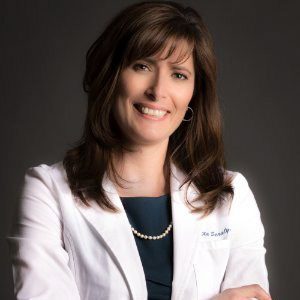 The refraction process has long been the “least favorite part of the exam for Loretta Seraly, OD, of Seraly Eye Care Associates in McMurray, Pennsylvania. After injuring her shoulder in a fall, the process became painful as well as dreary. “I would trade almost anything to not have to do the refraction,” she says, and when she heard that the
The refraction process has long been the “least favorite part of the exam for Loretta Seraly, OD, of Seraly Eye Care Associates in McMurray, Pennsylvania. After injuring her shoulder in a fall, the process became painful as well as dreary. “I would trade almost anything to not have to do the refraction,” she says, and when she heard that the 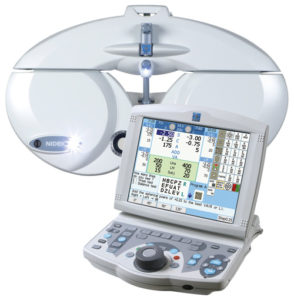

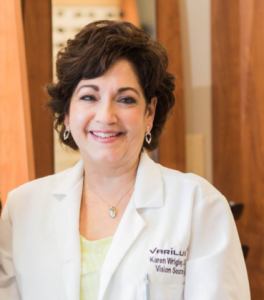 Karen Wrigley, OD, with two practices, Wrigley Eye Associates and Visual Eyes, in the Philadelphia, Pennsylvania, area, has always tried to keep her practices updated with the latest technology. Yet when she brought in new exam lane equipment from Marco recently, she was impressed by not only how it sped up the refraction and exam process but also by how much patients are enjoying the experience.
Karen Wrigley, OD, with two practices, Wrigley Eye Associates and Visual Eyes, in the Philadelphia, Pennsylvania, area, has always tried to keep her practices updated with the latest technology. Yet when she brought in new exam lane equipment from Marco recently, she was impressed by not only how it sped up the refraction and exam process but also by how much patients are enjoying the experience.
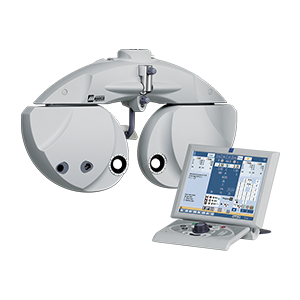 Dr. Wrigley has seen a positive return on investment and the intangible benefit of happier customers with the Marco systems. “Our vision statement at the practice is helping patients see well and look great. The new technology has helped us achieve this,” Dr. Wrigley says. “My goal is to always keep up and push forward.” She says her patients have even noticed the office updates. Those who have jumped to another practice for their eye care often come back to her because “they know we keep up with the latest and greatest in the industry,” she says. “It is so nice that they see what I’m trying to provide for them.”
Dr. Wrigley has seen a positive return on investment and the intangible benefit of happier customers with the Marco systems. “Our vision statement at the practice is helping patients see well and look great. The new technology has helped us achieve this,” Dr. Wrigley says. “My goal is to always keep up and push forward.” She says her patients have even noticed the office updates. Those who have jumped to another practice for their eye care often come back to her because “they know we keep up with the latest and greatest in the industry,” she says. “It is so nice that they see what I’m trying to provide for them.”